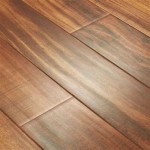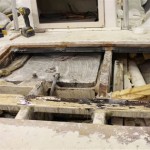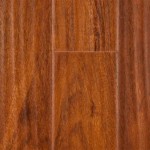Hardwood Flooring Installation: Essential Aspects for a Flawless Finish
Hardwood flooring is a classic choice for homes, known for its durability, beauty, and warmth. Installing hardwood flooring is a complex process that requires careful planning and execution. Here are some essential aspects to consider for a successful and stunning installation.1. Subfloor Preparation
The subfloor is the foundation for your hardwood flooring. It must be level, smooth, and free of any imperfections. If the subfloor is uneven, it can cause the hardwood flooring to creak or buckle over time. Unevenness can be corrected by leveling or smoothing the subfloor using a self-leveling compound or plywood underlayment.
2. Moisture Control
Hardwood flooring is susceptible to moisture damage, so it's important to ensure that moisture levels are controlled before installation. Check the moisture content of the subfloor and the hardwood flooring planks. If the moisture content is too high, it can lead to cupping, buckling, or other problems.
To prevent moisture damage, use a vapor barrier between the subfloor and the hardwood flooring. The vapor barrier will block moisture from entering the hardwood from below.
3. Acclimation
Before installing hardwood flooring, it's essential to acclimate the planks to the moisture and temperature conditions of your home. This process allows the wood to adjust to its new environment and reduces the risk of shrinking or expanding after installation.
Acclimation should be done for a minimum of 3 days, during which time the planks should be stored in the installation room in their unopened packages. This will allow the wood to gradually adjust to the environment.
4. Installation Methods
There are several different methods for installing hardwood flooring, including nailing, stapling, or gluing. The best method for your project will depend on the type of subfloor, the species of hardwood, and your budget.
Nailing is the most common method and is suitable for most subfloors. Stapling is a faster but less secure method that is often used for floating floor installations. Gluing is the most expensive but also the most durable method and is often used for solid hardwood flooring.
5. Finishing
Once the hardwood flooring is installed, it needs to be finished to protect it from wear and tear. The most common finishes for hardwood flooring include polyurethane, water-based finishes, and oil-based finishes.
Polyurethane is a durable and easy-to-apply finish that is resistant to scratches and water. Water-based finishes are less durable than polyurethane but are more environmentally friendly and easier to apply. Oil-based finishes provide a rich, natural look and are easy to repair.
Conclusion
Installing hardwood flooring is a rewarding project that can enhance the beauty and value of your home. By following these essential aspects, you can ensure a successful installation that will last for years to come. Remember to consult with a professional flooring contractor if you have any questions or concerns.

Hardwood Flooring Installation Step By Forbes Home

How To Install Hardwood Flooring The Home Depot
:strip_icc()/101206837-1dd14e2eaebe404e9c0e3fd1494b7c77.jpg?strip=all)
How To Install Hardwood Floors

How Long Does It Take To Install Hardwood Floors Cameron The Sandman Wood Flooring Contractor

How To Install Laminate Flooring For Beginners

How To Install Lock Engineered Hardwood Flooring

How To Install Hardwood Flooring Young House Love

How To Install Hardwood Flooring The Home Depot

Hardwood Floor Installations

How To Install A Hardwood Floor Build This Weekend








